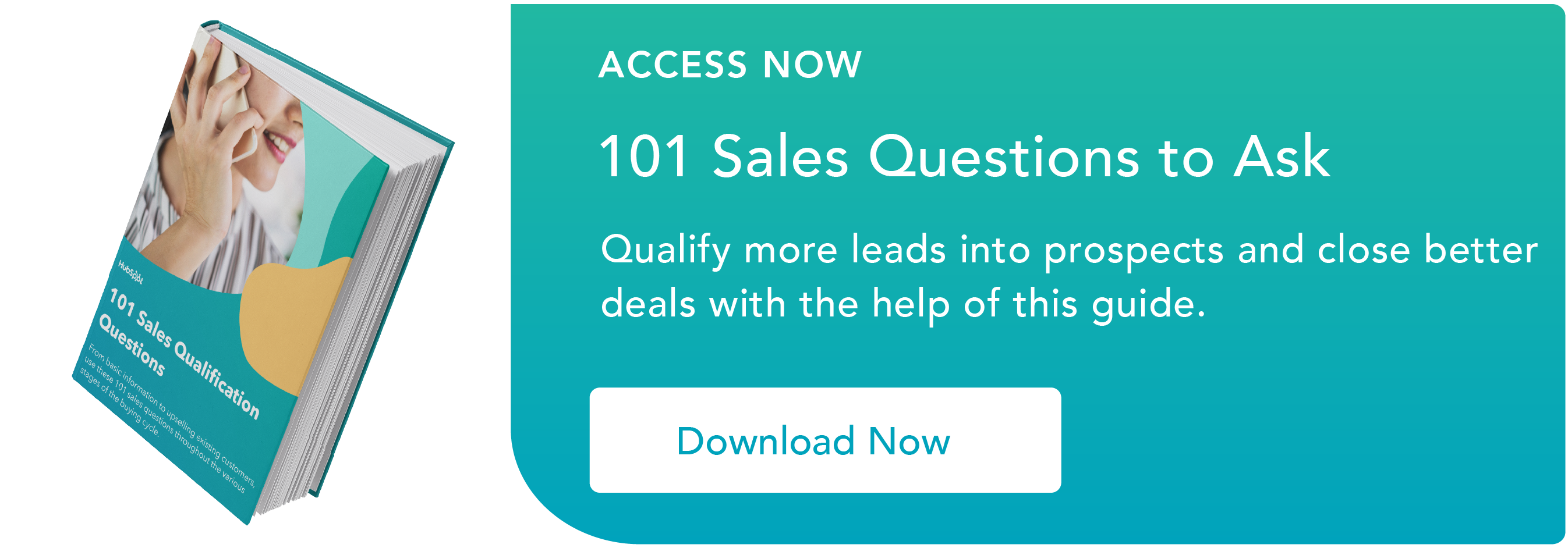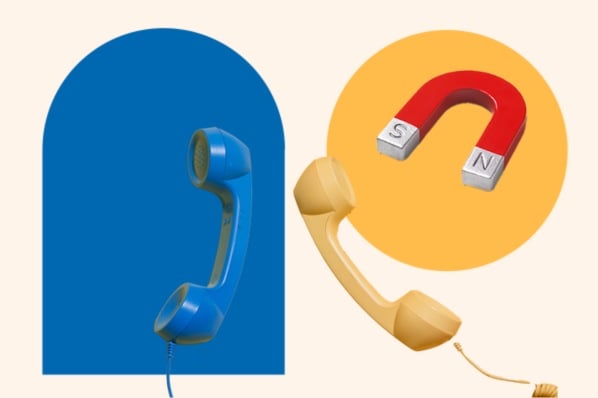Welcome to "The Pipeline" — a weekly column from HubSpot, featuring actionable advice and insight from real sales leaders.

“Buyer beware.”
We’ve all heard that expression before, and unfortunately, it’s because buyer-seller relationships haven’t traditionally been great. Old-school salespeople often used aggressive and selfish tactics to win business and then disappeared like Sasquatch in the Canadian mountains, so savvy buyers knew they had to do due diligence to make sure they weren’t being scammed.
But in the modern sales landscape, more and more salespeople have started reforming their behavior. “Seller beware” is becoming the new norm.
The Era of “Seller Beware”
In modern sales, the impetus is on the salesperson and vendor to choose, or qualify, the right type of client. Why? Because it’s the right thing to do and in the 21st century — you are only as good as your public persona.
This sets the foundation for long and healthy relationships, ensures you’re building a quality customer ecosystem, and decreases churn. That’s why I’m not the biggest fan of the one-call close.
Every new customer you bring on who isn’t the right fit presents a churn risk — and if they don’t follow through, take direction when it comes to implementation, or see value from the product, their bad customer experience reflects poorly on you and your company.
Some legacy salespeople think this is a wild attitude. They’re trained to sell to anyone who wants to buy and facilitate a quick buying process — but as inbound salespeople, we know who our products are made for, and we should only be selling to customers who are going to leverage value over time.
Salespeople who adhere to the inbound sales process should be careful to continuously assess their prospects at every stage of the process so they can provide the best outcome for their prospect and their company.
Some of the characteristics and behaviors that define a good-fit buyer are obvious, while others are a bit more nuanced. Here are 21 indicators that you should disqualify a buyer for being a poor fit at each step of the inbound sales methodology — Identify, Connect, Explore, and Advise.
Identify
In this stage, salespeople do research to start the sales process with prospects who seem like good fits. Disqualifying at the Identify stage is largely a function of making sure you’re targeting the right leads and is broad-based, so in most instances, you’re making an educated guess.
Signs You Should Disqualify
- Their company's size is much larger or smaller than your typical customer.
- Their company's revenue is much higher or lower than your typical customer.
- Their vertical market (i.e. industry) does not fit your target market.
- Their vertical market does not operate like your target market.
- The prospect is not in your sales territory.
- The prospect is not in a time zone or country that your country can support.
Connect
The Connect stage is the first time you’ll speak with prospects. The goal of this stage is to understand if your specific point of contact is the right person to speak to, if they have a perceived need, and if the need is going to be addressed (or if the company is still in the educational phase).
Signs You Should Disqualify
- The prospect is discourteous, rude, and purposely makes interaction difficult.
- The prospect responds with emotions rather than facts (this can be a negative or positive response, but usually indicates that the prospect doesn’t know enough about company priorities to make a decision.)
- The prospect is impulsive and goes from extremely excited to apathetic and back again.
- The prospect doesn’t want to answer any of your questions.
- The prospect wants to run the sales process themselves and won’t compromise on anything.
Explore
During the Explore process, a salesperson’s goal is to understand the nuances of their buyer’s goals, plans, and challenges. Start looking for alignment between your prospect's goals and your capabilities. You should also continue probing into whether your prospect is the best point of contact.
Signs You Should Disqualify
- The prospect makes dishonest or conflicting statements that don’t add up.
- The prospect is unwilling to take direction and seems competitive — rather than willing to work with you to form a plan.
- The prospect doesn’t have the resources to successfully implement your product (time, money, or staff).
- The prospect is very disorganized and can’t spend time with you.
- Your product is needed but isn’t a company priority right now.
Advise
During the Advise stage, salespeople take all the information they’ve gathered during the sales process and present a customized plan tailored to the prospect’s specific needs and goals. Look for signs that your prospect is or isn‘t ready to approve the deal, and whether they’ll be successful if they do.
Signs You Should Disqualify
- The prospect suffers from “magic wand syndrome” and doesn’t realize that implementing your product will take work.
- The prospect doesn’t follow your direction (e.g. you ask them to read a specific piece of content or do an exercise to teach them something, and they don’t do it).
- The prospect cancels meetings with short or no notice multiple times.
- The prospect seems to be going through the motions and isn’t really willing to follow your lead.
- You have to go over the same material more than three times before your prospect “gets” it.
It takes an experienced salesperson to recognize when they should disqualify a deal. Almost all prospects will show some of these indicators, so it’s up to you to chalk it up to a lack of expertise or nervousness versus an actual poor fit. The key is to be 100% transparent, have open conversations with your prospects, and set expectations at every step of the process.
![Free Download: 101 Sales Qualification Questions [Access Now]](https://no-cache.hubspot.com/cta/default/53/e97d6603-b40e-4085-ad55-0074b7351ead.png)

![How to Use BANT to Qualify Prospects in 2024 [Expert Tips]](https://blog.hubspot.com/hubfs/bant-questions-6606f7b6c0d9e.webp)








![What a Client Intake Form Is & What It Should Look Like [Template]](https://blog.hubspot.com/hubfs/CLIENT%20INTAKE%20FORM%20%281%29.jpg)